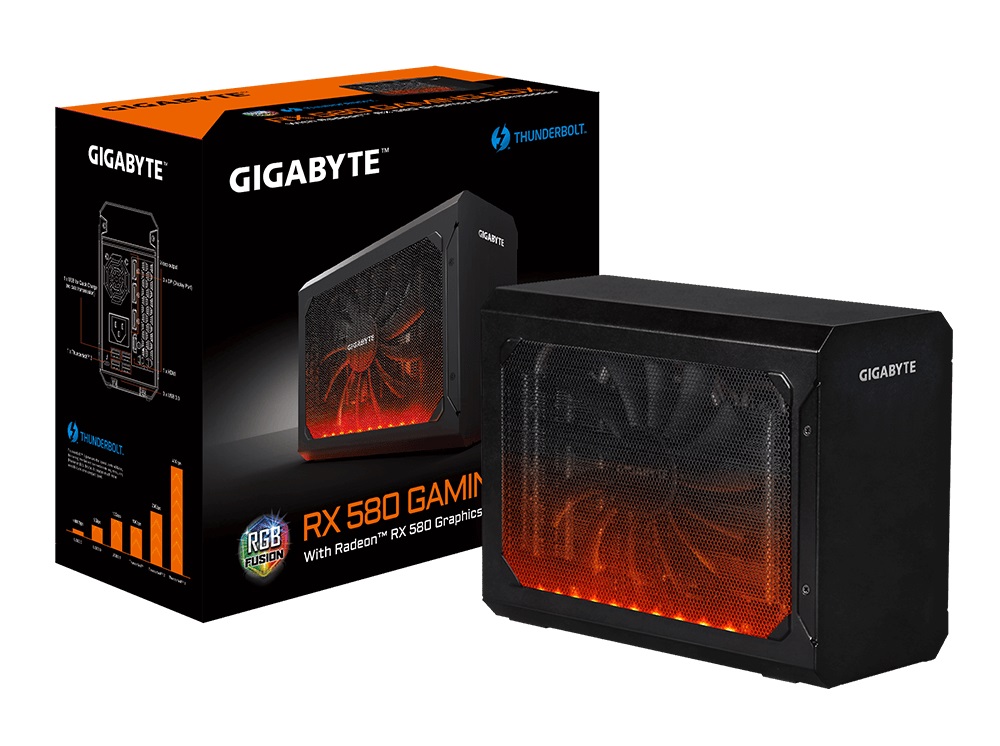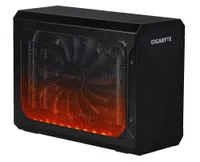Gigabyte Launches Radeon-Powered External Graphics Box
Gigabyte launched a new Thunderbolt 3 external graphics enclosure with AMD Radeon graphics inside.
The RX 580 Gaming Box features a Radeon RX580 graphics card under the hood, which sports 2,304 shaders clocked at 1,340 MHz in Gaming mode (1,355MHz in OC mode) and 8GB of GDDR5 memory clocked at 8,000MHz. Similar to the Nvidia models, the RX 580 Gaming Box utilizes a 450W 80 Plus Gold certified PSU to power the GPU. The enclosure is identical to Gigabyte's other docks, measuring in at 212 x 96 x 162mm. Essentially, this is just the same Gaming Box with an AMD GPU, which has slightly different display connectivity than the Nvidia GPUs (the RX 580 Gaming Box has three DisplayPort 1.3 ports and one HDMI 2.0 port).
Interestingly, the RX 580 Gaming Box drops the Aorus branding of its Nvidia counterparts, despite being a nearly identical product. This could be due to the RX 580 falling behind in performance compared to the other boxes that house GTX 1070 and 1080 graphics cards, with Gigabyte possibly reserving Aorus branding for a certain level of performance. However, some have taken this as a sign that the company joined Nvidia’s now-infamous GPP program, which purportedly requires partners to abandon AMD graphics cards in order to join. This is all hearsay, but the missing branding is ominous and lends to the narrative that Nvidia could be making such deals behind closed doors.
The new RX 580 Gaming Box isn’t available for purchase yet, and pricing has not been disclosed. However, we should expect to see it in the $500 zone when it arrives, considering the graphics card inside.
Get Tom's Hardware's best news and in-depth reviews, straight to your inbox.
Derek Forrest was a contributing freelance writer for Tom's Hardware. He covered hardware news and reviews, focusing on gaming desktops and laptops.
-
justin.m.beauvais "Interestingly, the RX 580 Gaming Box drops the Aorus branding of its Nvidia counterparts, despite being a nearly identical product."Reply
Possibly a result of the GeForce Partner Program with the requirement of having an NVidia specific sub-brand and what not... but that is just speculation as we will probably never know what that is all about because people don't seem to be pushing too hard to figure it out.
That said, if this thing has the same performance loss, vs properly installed desktop cards, as other external graphics boxes we will probably see RX 470 levels of performance out of it... maybe a little less.

